A firewall with negative 48 volt (-48V) power is quite the pain to power from 230 volts, and since its only on a Core Duo, lets run down what it has instead!
Introduction:
Note: This article is meant for those who would like to know more about the inner workings and hardware of this system since it was impossible to find what it actually contained. If you are looking to buy one of these, this article might be of help.
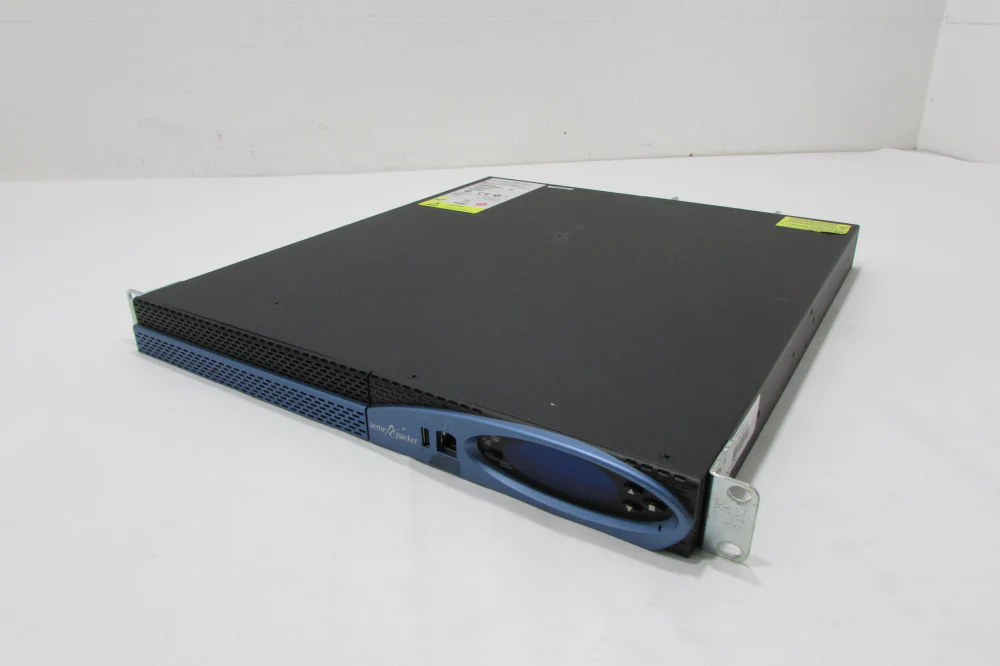
So this is a 1U sized rack mountable packet director for SIP protocol traffic used in communications data.
In my case, I got this as a bonus with another system I am as of today still working on.
Once I found out this “Net-Net” (Seriously who thought of that name) is actually using 48 volt power on its input, and then has DC to DC converters to send 12 volt to the computer itself it dawned on me power it would not be an easy option.
You can look at a hardware rundown here or here from the manufacturer, but it will not tell you what exactly it is using..
Hardware:
I looked at it for a while until I noticed one of the power supplies has burn marks on the metal near the plug and internally on one of the coils. So, instead of paying 119 dollars each for new power supplies for what ultimately turned out of be a Intel Core Duo system I will instead completely mention all chips and hardware I can possibly identify and make an educated guess for what it does.
Note: Sadly the whole assembly is damaged so a full picture of the unit would look horrible, I will not include one for that reason.
Main SBC:
The main computer that does the processing is built on a single block, a Single Board Computer. In this machines case, it is built onto a “COM Express” connection. COM also being an abbreviation of Computer On Module.

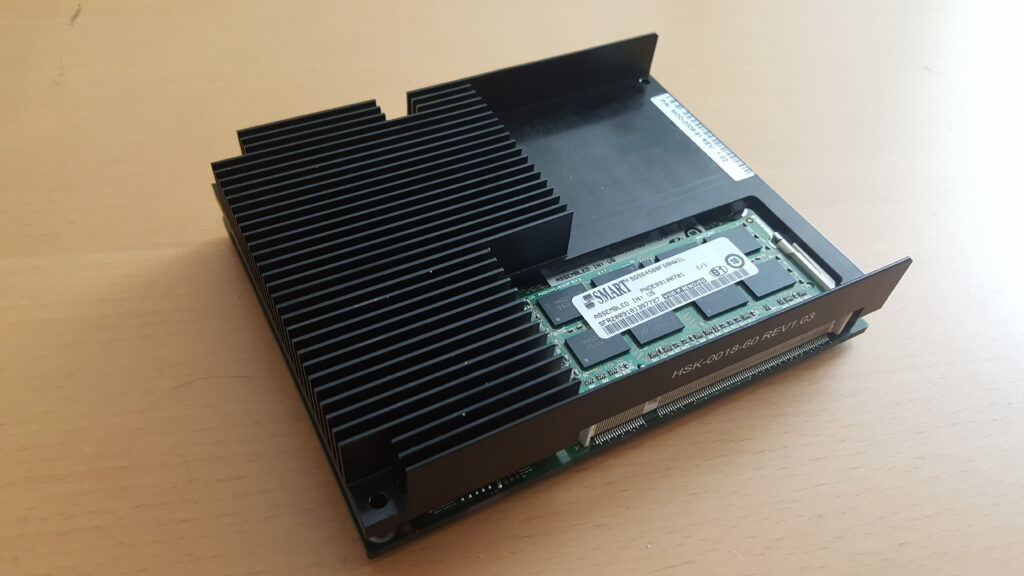
Here is what the module is built out of:
- Processor:
Intel Core Duo T2500 @ 2.00Ghz (Info) - RAM:
Two SMART Modular Technologies SG564568FG8NWIL 1GB DDR2 modules. - Chipset:
Intel GM945 Express Chipset - Network:
Broadcom BCM5789KFB6 gigabit Ethernet. - Flash ROM BIOS:
SST 49LF008A 8 Megabit Flash ROM - I/O Controller:
Intel 82801GHM I/O Controller
The hardware is question is comparable to my ThinkPad T60, which has a T2400 processor. The board cannot do 64 bit computing and is thus limited to around 3.5GB of RAM, this module has two gigabytes installed.
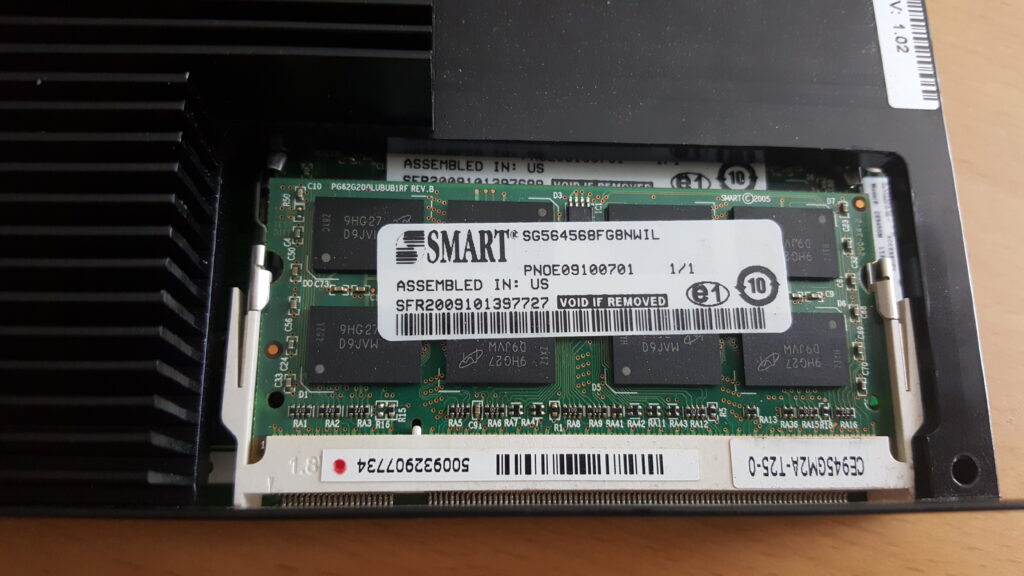
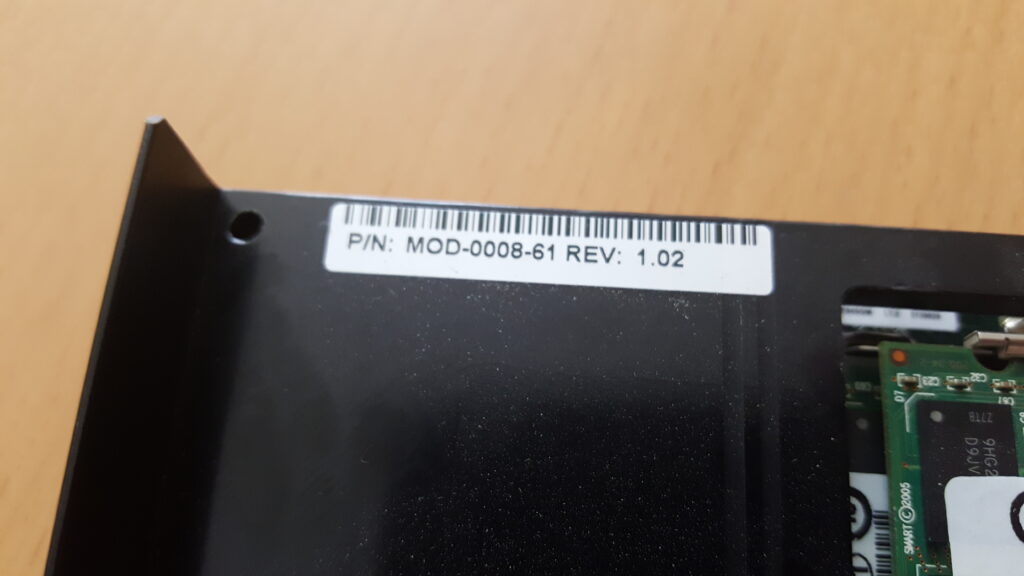

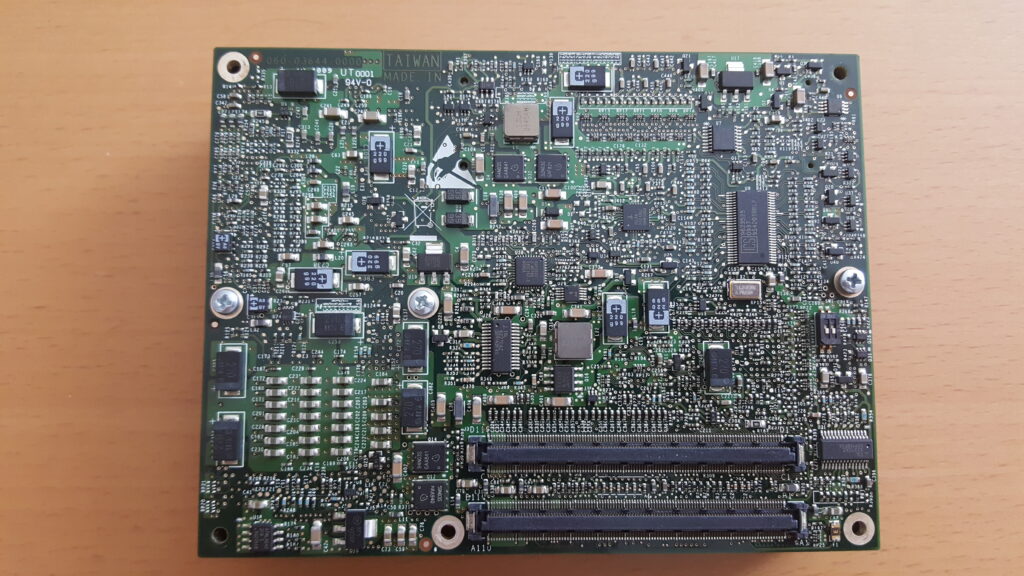
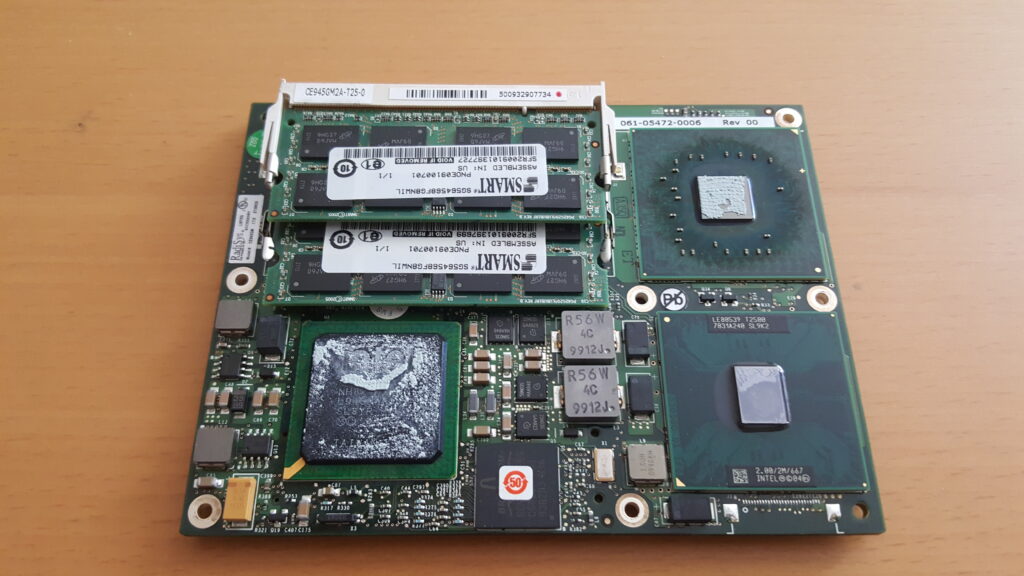
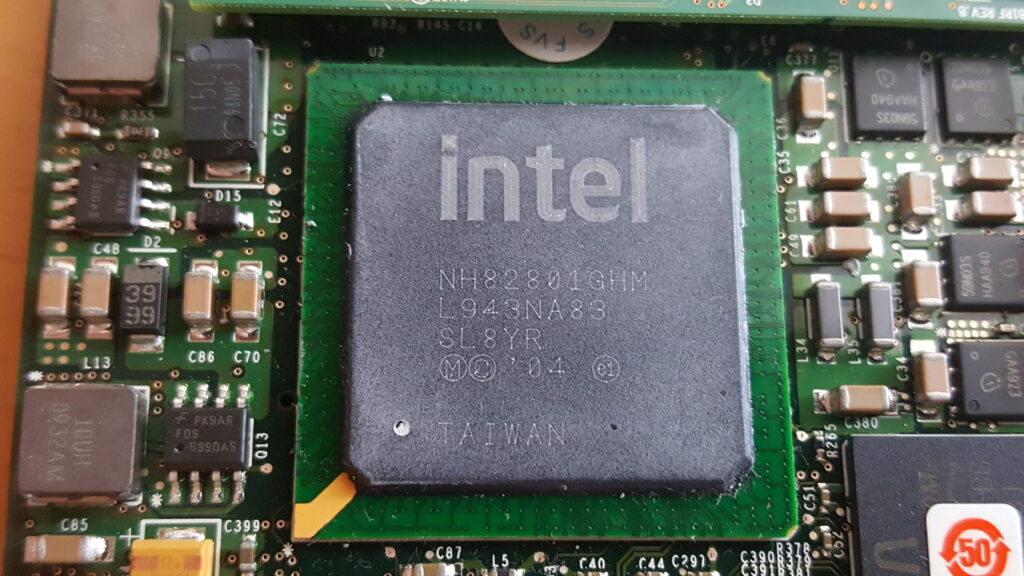
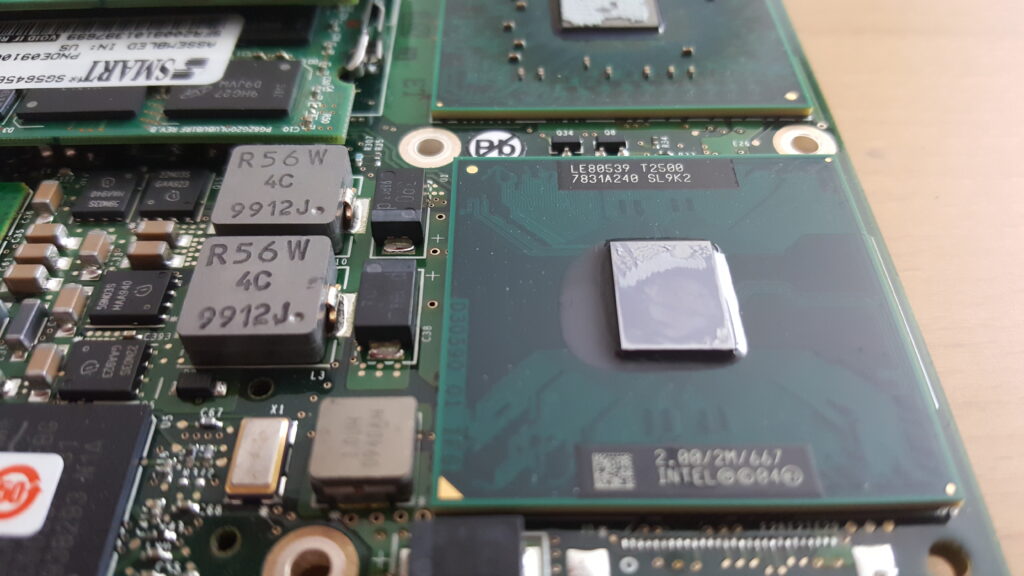
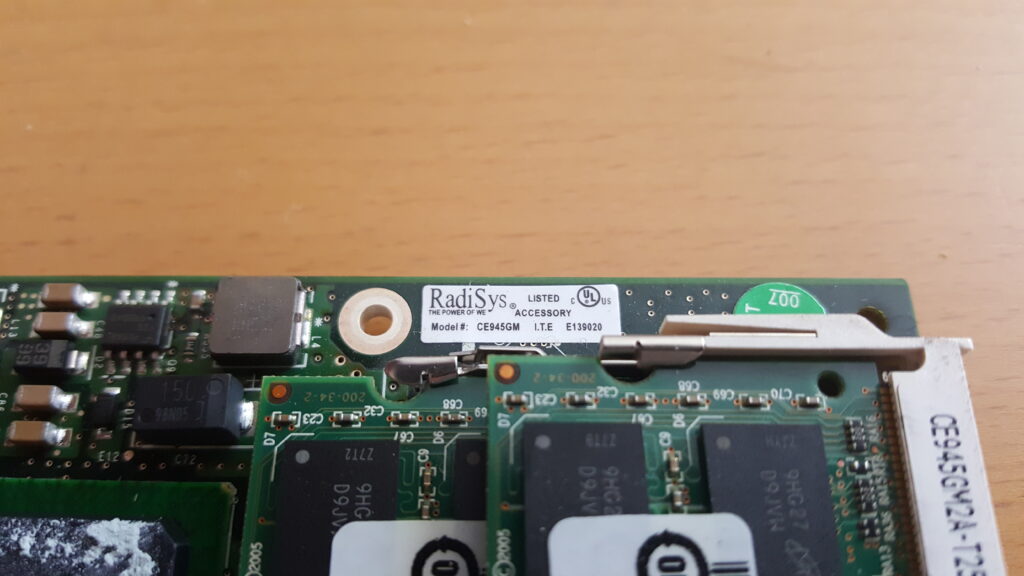
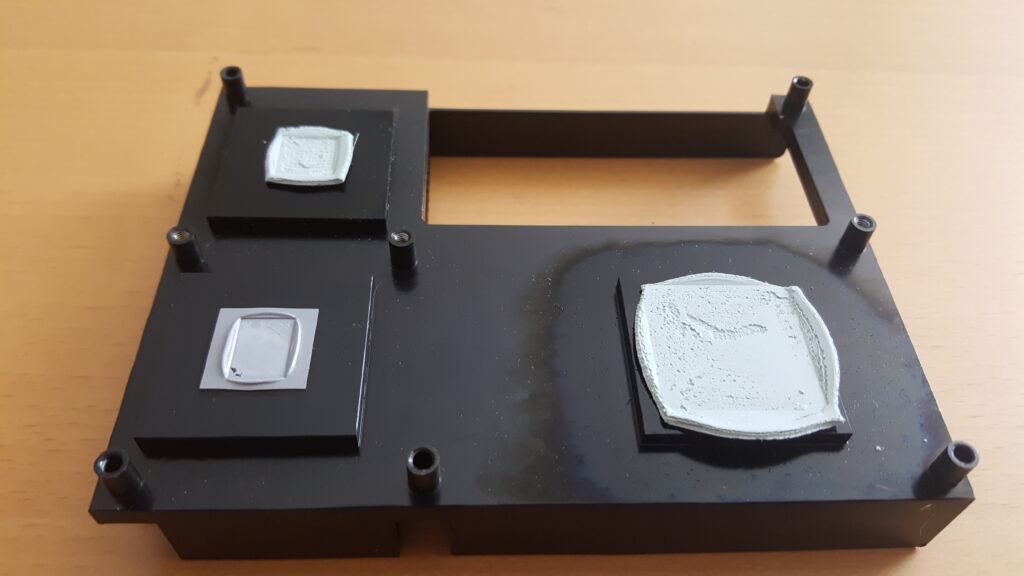
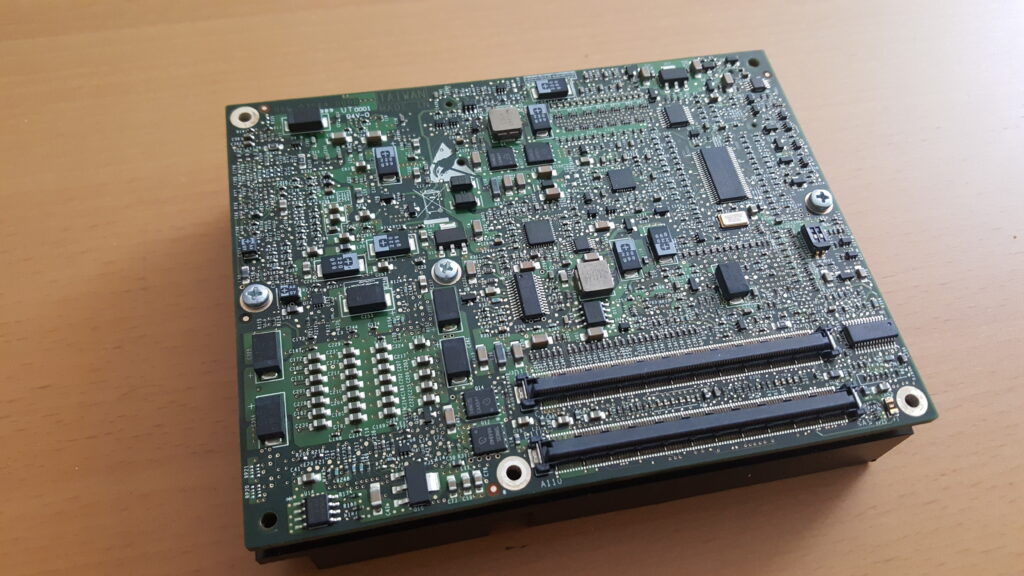
Motherboard Hardware:
And by that I mean, not the hardware on the SBC, the heart of the system but rather the extra hardware that is built to operate for this exact network appliance.
Heatsinked:
- Two CPLD Units: NetLogic 75K72234
Goal unknown, likely support hardware for the “Two-level encryption acceleration hardware” listed in the hardware overview PDF. - One AMCC nP3750 (nP3750PBC-700):
5-Gbps Network Processor with Integrated Traffic Manager
AMCC nP3750 Network Processor:
This massive chip deserves its own paragraph because I realized this is how they can achieve the multi-gigabit of traffic performance using a Core2Duo.
This chip handles most of the traffic itself, has a massive RAM buffer it can use utilizing both RAM types it supports;
Quad-Data-Rate SRAM and RLDRAM-II
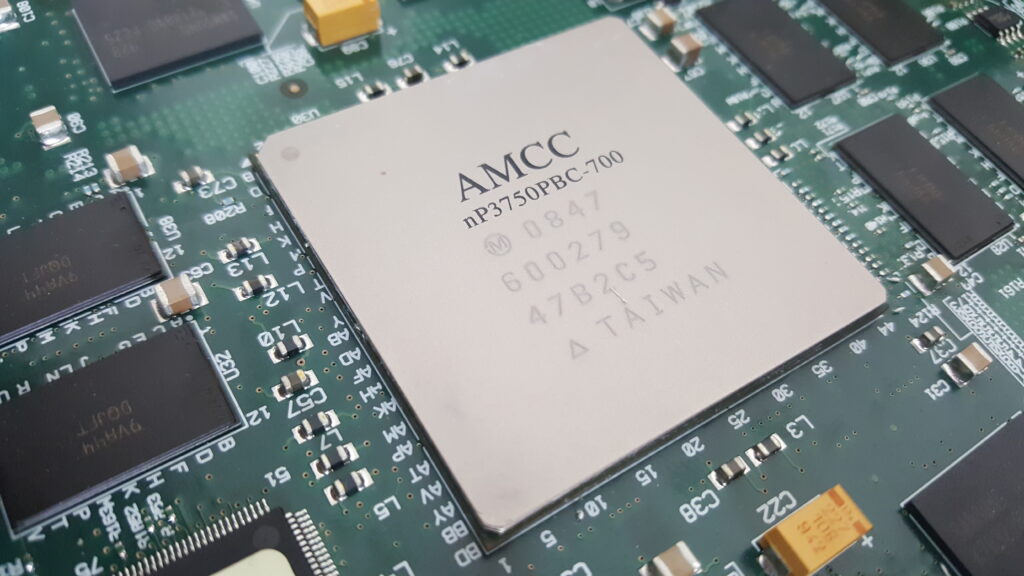
The nP3750 includes four embedded Ethernet MACs, specialized coprocessors that perform classification, policing, and coherent database management for unparalleled line-rate performance.
The nP3750 supports high-performance memory interfaces such as RLDRAM-II and QDR-II SRAM.
AMCC 2006.
It basically leaves the Core2Duo to simply manage and control the onboard CPLD’s and this monster of a coprocessor.
Of course I cannot interface with it since I cannot start the system up, but even if I could I am 90% sure this chip is so niche no open source solution like PFSense would be able to even use all the RAM and processors embedded into it.
And as I have seen in other network appliances this chip also houses the security coprocessor, which handle data encryption. That is a very old trick as well, Intel had network cards with full RISC equipped processors on them, and some other firewalls I have tried to make a blog post about also housed an encryption coprocessor. The latter is supported by Linux!
For a full rundown I suggest you look at the datasheet for this chip, which you can find here.
Storage:
The unit has two disk on modules, USB SSD’s in a way. Since there do not seem to be USB plug identifiers I will look at them as bottom and upper module, the bottom one having its screw post next to PCB marking “R2082”.
Both modules have the exact same chip number: “G9ED52L256G1AP”
The model number is highly likely this one: “PG9ED093SMF”
Then the number below that is likely a production date:
- PMF090312SI9
- PMF091010SI5
There are two installed, one likely for booting the system and one for keeping settings. They are both basically identical silicon wise, and have a write protect switch on the bottom.
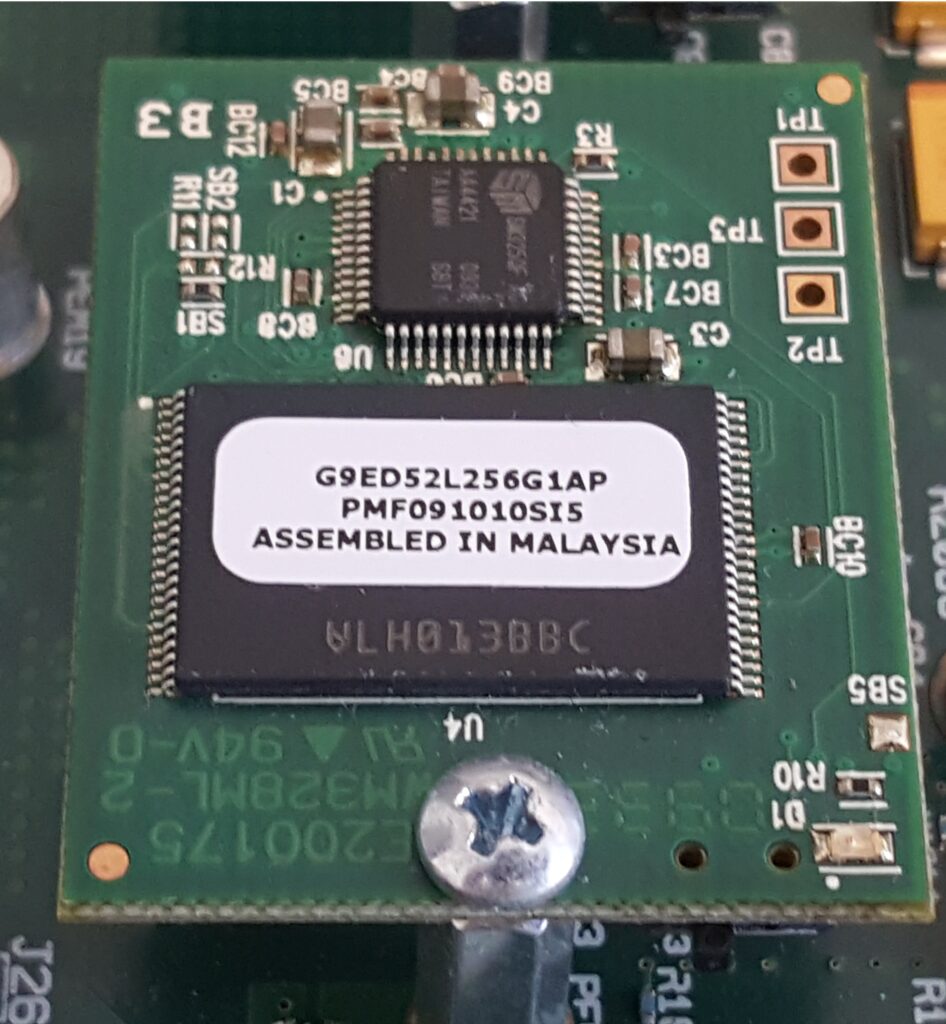
Various:
Next are all the various chips scattered around the board controlling various things.
- Eight “9VA44 DQJFT”:
Goal unknown, likely high speed RLDRAM for the AMCC Network Processor. - One PLX PCI 9056:
66Mhz 32 bit PCI bus mastering Accelerator. - One PLX PEX 8111:
ExpressLan PCI Express to PCI Bridge.
This chip likely turns the PCIe link from the computer into older PCI links for other support circuitry. - Four Samsung K7R321884C-FC25:
36MB SRAM, total 144MB extra RAM. QDR Interface. - One Winbond W83627EG:
SuperI/O controller, offers serial ports, keyboard, mouse, floppy disk and more. - One Cyprus CY7C1512AV18-250BZC:
More SRAM, QDR interface, likely used for the NetLogic CPLD’s. 72 Megabit per chip. - One National Semiconductor VM912AB:
Unknown, close to the power supplies. - Two BroadCom BCM5789KFB.
The BCM5789 are two more gigabit network interfaces, they connect to the CompactPCI-like bus, probably used for the management or/and console interface/interfaces. KFB variants seem custom made. - One Cypress Semiconductor CY14B104N-ZS45XC:
4 Megabit Non-Volatile SRAM, purpose unknown. - One Lattice ispPAC-POWR1220AT8 (Chip U100, has a sticker on it.)
Power Supply monitor, communicates with the onboard power supply for fan speed and more. - Two Altera MAX II CPLD’s:
More custom hardware, purpose unknown. Model EPM240T100C5.
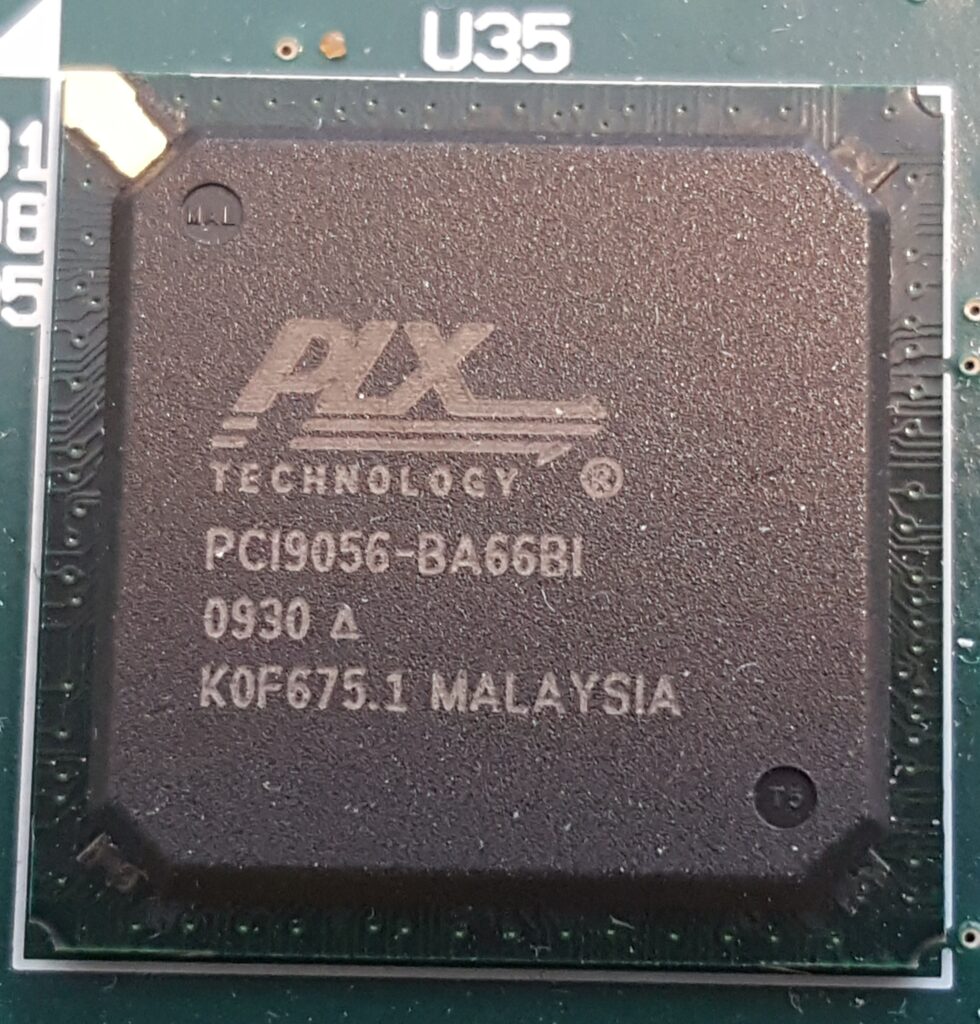
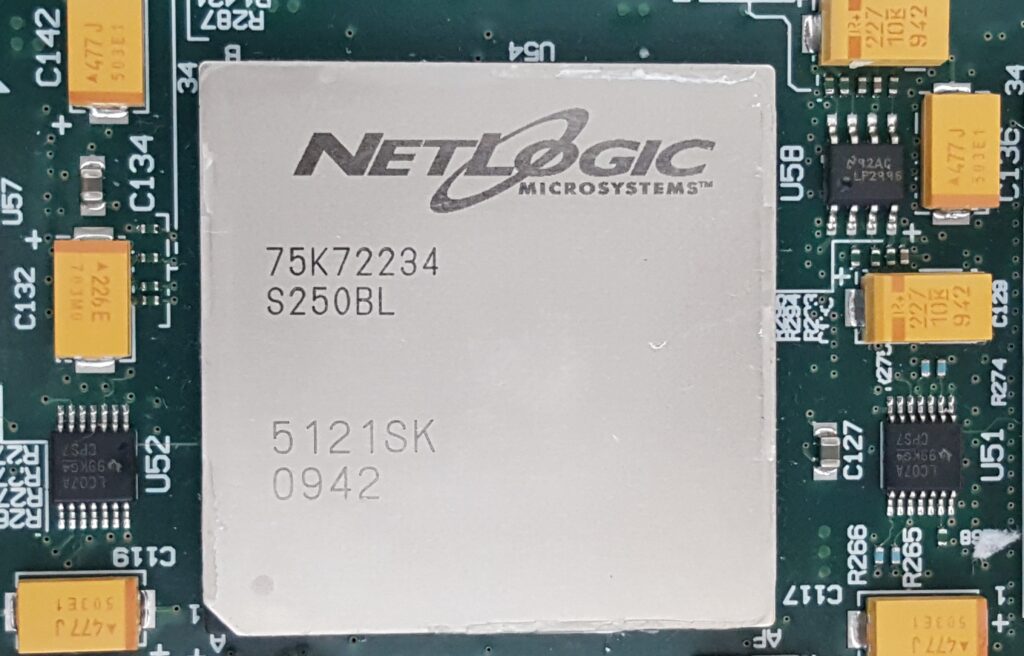
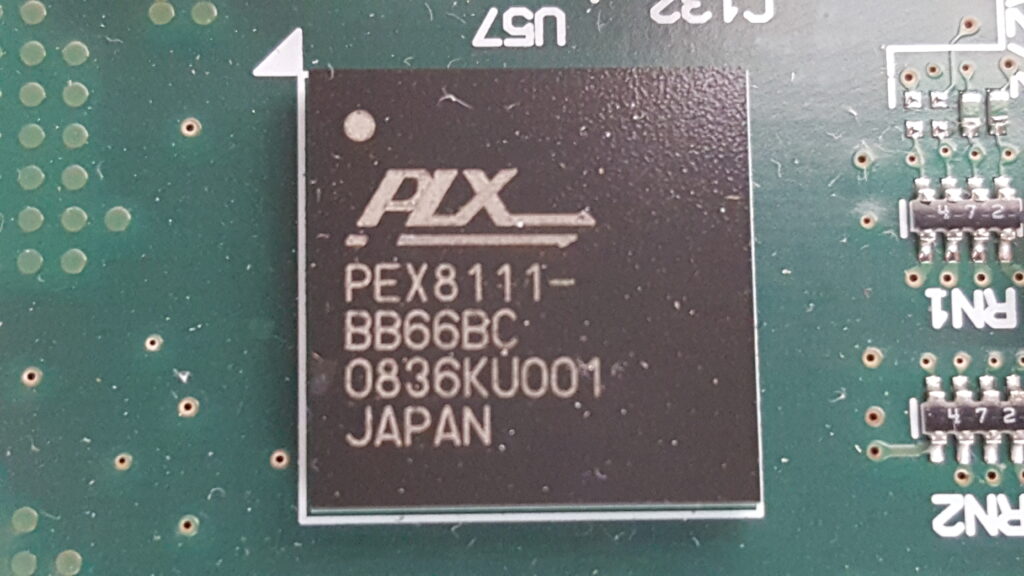
Network Add-On Module:
This is regarding the installed networking module, product number “002-0602-50 REV 3.03”
This card offers 4 gigabit network interfaces, 3 management ports, plus a console and alarm interface.
PCB Identificators:
- NMP008144 3.03+H
- ACP002 0602 50 R5
- NGI7AM5SAA
Front identification? - 090850028104
Production date identifier?
Components:
- BCM5464SA1KRB: (U50)
Broadcom / Avago Quad Port Gigabit Copper Tranciever. - Pulse H5008NL (T1 to 7)
LAN connection transformer. - Bel Power ZY7115L
DC to DC converter, 5.5V volt output at 15 amperes. - Bel Power ZM7316G (U74)
Power Management IC for the DC-to-DC converters. - LTC16445CS: (U49)
CompactPCI Bus Hot Swap Controller (LTC1644 Series)
Conclusion:
Of course its a shame I cannot actually power it on and use it, but I hope this information wil help someone out these if they were to find any of these chips or for that matter, the whole system.
I also did not cover software since I have no real way of knowing what these do, what they run and what this unit did in its lifetime. I would rather thus not spread misinformation with no way to confirm if anything is true.
Thanks for reading!
